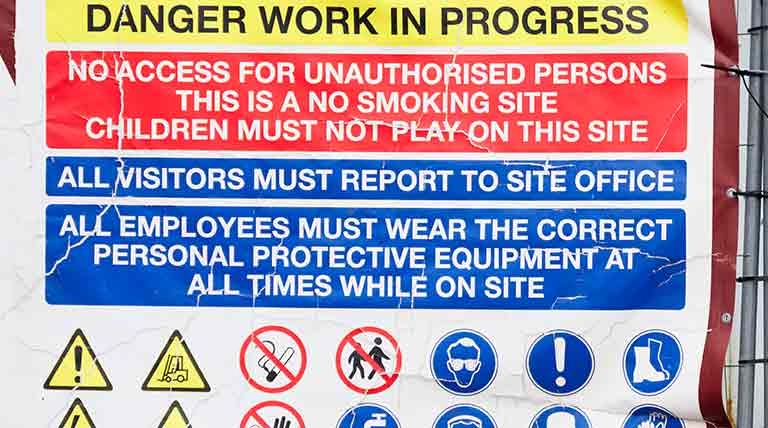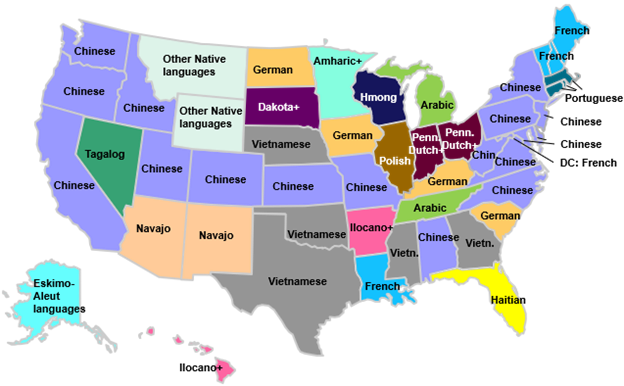Improve Efficiency and Safety with Translated Work Instructions
Even if you’re only operating in the US, you might still need to eliminate the language barrier
- As American workplaces become increasingly diverse, translation plays an important role.
- One out of every 10 working-age adults in the U.S. has limited English-language proficiency.
- There is a growing downward trend in employee safety for industries employing populations with limited English proficiency.
- Translating work procedures makes it easier for your teams to share and access the One Best Way – no matter where it’s housed in the world.
- You can support a multi-lingual workforce in one location and still maintain a single source of truth.

Pepsi was one of the first multinational companies to set up shop in China under the Open Door policy in 1982.1 It launched with the slogan, “Pepsi Brings You Back to Life.”2 The idea behind the slogan was to position Pepsi as a lively brand that would appeal to a younger demographic.
But Pepsi’s initial campaign was misunderstood as “Pepsi brings your ancestors back from the grave.” Not a good marketing strategy in a country where ancestor veneration is an important part of the culture. The company learned quickly and pivoted.2 The take away: context and culture matter when translating content for an audience that doesn’t share your language.
Today’s access to a global talent pool means that most businesses will increasingly include employees whose first language isn’t English.3 This presents unique challenges and opportunities for both organizations and employees.
As American workplaces become increasingly diverse, translation plays an important role, and not just for your marketing strategy. Providing job aids, work instructions, and other critical documents that have been translated into the native language of your teams can help reduce errors and improve safety, efficiency, and compliance metrics.

Challenges faced by non-native English speakers
English is the common language of global business. Many companies have even adopted English as their official working language.
More than 1.5 billion people speak English, but about 75 percent are non-native speakers.4 One out of every 10 working-age adults in the U.S. has limited English-language proficiency.5 They face challenges that aren’t related to their competence or skills.
- Missing cultural cues (i.e. not recognizing that red is used as a universal signal to stop or indicate a safety hazard)
- Hesitating to ask for clarification as to not appear incompetent, even if it’s a reasonable request
- Failing to speak up because they’re self-conscious of their delivery
- An inability to pick up on subtext or idioms3
For industries in the U.S., like manufacturing and agriculture, that are employing large numbers of populations with limited English proficiency (LEP), there is a growing downward trend in employee safety.6
- Hispanic employees have the highest workplace fatality rate of any group
- Hispanic fatality rates are nearly 50% higher than the overall rate
- Fatality rates for occupational injury are on the rise for the Hispanic population while rates among nearly all other groups are falling6

Employees who don’t speak English typically struggle to understand common workplace procedures. They also struggle with instructions when those procedures are related to safety due to the lack of comprehension.
The U.S. Chamber of Commerce released data that shows there are roughly half as many available workers for every open job and that ratio continues to fall. Non-native English speakers play an integral role in many of our industries. Manufacturers can look to the foreign-born labor force to supplement its existing workforce and fill the skills gap, both for upper-level professionals and skilled labor.7 Providing them with the right training and resources to succeed is key.

Avoid getting your wires crossed
Consider a manufacturer that operates in a diverse region. The workforce is composed of individuals with varying language proficiencies, but the work instructions and job aids are only available in English. This poses challenges for their non-English speaking team members. Without multilingual job aids, wires can get crossed, quite literally.
Airbus was formed by a consolidation of French and German aerospace companies with employees located in France, Germany, Spain, and the United Kingdom. In the early 2000s, while the company was working on the A380, it brought all their key players together under one roof in Toulouse, France. They also brought together different languages, cultures, and IT systems that didn’t talk to each other.8
Because national sensibilities were prioritized over clear communication, different designs of the large plane were in use simultaneously. The engineers creating the designs didn’t speak the same language and neither did their software. German and Spanish engineers used software that wasn’t compatible with what the French and British were using. The German software couldn’t “translate” its designs to match what those in the French software were saying. Problems ensued.
After installing thousands of veins of copper and aluminum wire around the walls and floor panels of the airframes, the German mechanics installing the wiring discovered it was too short.8 This led to delays in the production schedule, increased costs, and significant rework to correct the error. That was only one of several problems that would occur over many years.
The language barrier between the French and German teams played a crucial role in the miscommunication that caused the mistake. This incident highlighted the importance of effective communication, clear documentation, and cross-cultural understanding in the manufacturing process. It prompted Airbus to implement measures to address language and communication challenges.9

The importance of translation
When considering what languages to translate your work instructions into, or whether to translate them, start by assessing the language proficiency and diversity of your workforce. Identify the primary languages spoken by your employees in specific regions or zones, especially those who directly handle the work instructions.
Don’t get too granular. Consider the official or commonly spoken languages of regions. Choose the ones that could enhance understanding and compliance.
If specific regulations stipulate that work instructions be provided in certain languages to ensure worker safety or compliance, prioritize those accordingly. Provinces in Canada, for example, are required by law to provide work documents in both French and English.
Translating work procedures into multiple languages is important for several reasons:
- Safety
Most companies prioritize safety above all else. It’s critical to have work instructions that are crystal clear to everyone who might engage in a dangerous activity. Even if no other work instructions are translated, safety is a must.
- Efficiency & Inclusivity
By translating work procedures into all dominant languages used by team members in your facilities, you can ensure all employees will understand and follow them. This not only shows them that they are valued and respected, but it ensures everyone does their work safely and efficiently.
- Compliance
Certain work procedures are also required by law. Translating procedures and documents can reduce the risk of non-compliance.
Don’t rely entirely on automation
You’ll want to appoint a native speaker to review your documents before publishing them, too. Acadia is integrated with Google Translate, but machine translation algorithms may not account for cultural differences, idiomatic expressions, or technical jargon. These can lead to mistranslations or misunderstandings.
So, after a document is automatically translated, it is entered into workflow where it can be reviewed by a native speaker before publication.

Look for the One Best Way
Translating work procedures helps you meet your legal obligations and ensures the safety of your team members. It can also make it easier for your teams to share and access the One Best Way – no matter where it’s housed in the world.
When a team member at one of our largest global clients thinks there’s a better way to do something, he’ll poke around the content from other facilities around the world. He calls this “window shopping.”
Since there are documents in a variety of languages, he’ll look for procedures showing better metrics than his own. If he notices, for example, better metrics for repairing an auger filler at the plant in South Africa than what his facility is doing in St. Louis, he doesn’t have to know Swahili or find someone who does.
When he finds a better process, it’s as easy as automatically translating the document. Once translated, he can easily adjust and add any specifications needed for his own facility.
In the past, having a procedure in Swahili wouldn’t be much help to the folks in St. Louis. But with the ability to maintain and manage translations in Acadia, the St. Louis team can easily translate any procedure to English and adopt it in no time.

Relocating operations
Translated procedural content can also help with transitioning operations with near-shoring and other production location shifts.
Another of our clients needed to rapidly deploy an extension of an existing shared services team to increase the existing team’s capacity. With Acadia, they quickly translated content from the domestic team and used it to onboard and train a new staff in Mexico.
Overflow work from domestic operations transitioned to the near-shore office with no downtime and limited overlap in service. Once the new team was trained and working, Acadia was used to ensure compliance and maintain low error rates.
Without Acadia, the company would have anticipated a high error rate during a much longer ramp-up period.
Today, the staff of the Mexican office uses Acadia every day to quickly and accurately answer customer questions and to follow company procedures for managing billing and other financial activities. This office is also a model for training and onboarding across the company.

Getting started
You can support a multi-lingual workforce in one location and still maintain a single source of truth. Acadia makes language translation simple and can also help you measure performance in one location and compare it to performance in another location with similar operations.
This can help you identify what’s working best across locations. When you’ve identified the One Best Way, you can translate it and make it available to everyone.
If the idea of translating all your procedural documents sounds overwhelming, keep in mind they don’t all need to be done at once. Start by identifying the most critical ones. If you don’t know where to start, reach out, we can help you identify what makes the most sense for your business.
Sources:
- Pepsi was one of the earliest multinational companies in China
- China’s Golden Week – A Good Time To Make Sure You Don’t ‘Bite The Wax Tadpole’
- HR Managers, Invest In Your Non-Native English Speaking Employees
- Viewpoint: The Silencing of ESL Speakers
- In the midst of a worker shortage, ESL support can expand the talent pool
- Employee Safety for Non-Native English Speakers
- Manufacturers Can Leverage Immigration to Fill Labor Gaps, Address Prevailing Skills Shortage
- How Computer Design Software Delayed The Airbus A380
- Global Workforce Forecast
Ready to crush your goals?
"*" indicates required fields


